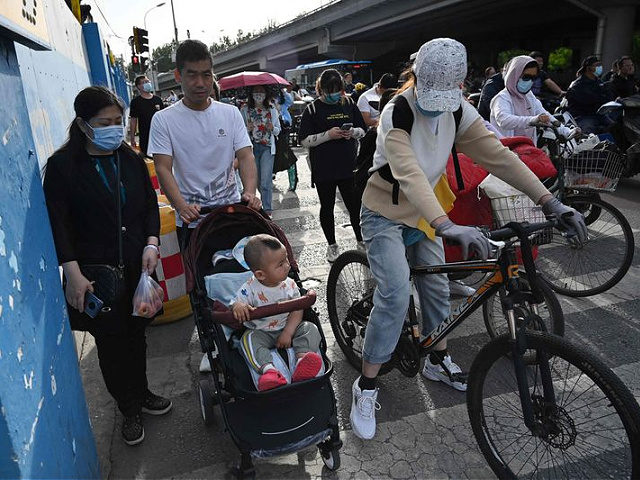The South China Morning Post (SCMP) on Thursday quoted Chinese biologists, maternity doctors, and political advisers saying that Chinese infertility rates increased much faster than expected over the past decade, making it harder to pull out of the demographic crisis that was caused in part by China’s draconian “One Child Policy” population controls.
The SCMP noted that China’s infertility rate was expected to reach 18 percent by 2025 in earlier estimates, but a report from reproductive health specialist Qiao Jie published last month in the British medical journal Lancet offered the latest evidence that infertility has already reached 18 percent and is growing worse.
“Besides age-related infertility, infertility is probably affected by environmental exposures, chromosome abnormalities, lifestyles and unexplained factors,” Qiao said.
Other analysts noted younger women are becoming infertile, with the average age falling from about 40 to the early 30s. That also happens to be the age at which many upwardly-mobile Chinese women consider having the second or third children that are now permitted to them by China’s modified birth control laws, which means many of those women become infertile before they can have the additional children they wanted.
Qiao suggested in his Lancet paper that Chinese women should consider getting pregnant sooner to minimize the risk of infertility, but the SCMP noted this is an “increasingly unappealing choice among many millennials and older members of Generation Z.”
The One-Child era, when it was illegal for decades to have a second child, left China especially vulnerable to this phenomenon at precisely the moment when Communist Party leadership realized they were heading for demographic collapse and began urging people to have more babies. The immediate problem is not the Chinese population growing smaller, but older. As fertility rates decline, the elderly grow larger as a percentage of the population, making it difficult for younger workers to support them.
“Infertility is not just a rising problem in China. Globally, the rate increased from 11 per cent in 1997 to 15.4 per cent in 2018, according to a report by U.S. consulting firm Frost & Sullivan. The range of reasons given included an increase in the average age that couples first try to have a baby, as well as increasingly unhealthy lifestyles and environmental pollution,” the SCMP wrote.
Local Chinese governments are trying to improve birth rates through measures such as raising the limit on children from two to three, long before the central government officially raised it last month, and discussing various financial incentives to encourage childbirth. The regime in Beijing is still cautious because it fears rural families in areas that were only recently rescued from dire poverty might start having too many children, creating a new poverty crisis.
There have reportedly been discussions among communist leaders about removing the limit on children entirely. The limit was raised to three children in something of a political panic after the last census came out and the growing evidence of infertility suggests that a dwindling number of women who can keep having children in their 30s and 40s may be called upon to shore up the population.

COMMENTS
Please let us know if you're having issues with commenting.